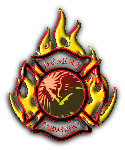












HOME
THE BASICS
PLASMA CUTTERS
PLASMA TABLES
SOFTWARE
WATER TREATMENT
AIR SUPPLY
TUTORIALS
VIDEOS
TIPS & TRICKS
PROJECTS
DXF FILES
FINISHING
RESOURCES

|
Material |
Weight 4x8 |
Weight SQIN |
Cost 4x8 |
Cost SQIN |
Cost x3 |
Cost x4 |
Cost x5 |
Cost x6 |
|
20g Cold Roll |
48 |
0.0104 |
$35.00 |
$0.008 |
$0.024 |
$0.032 |
$0.040 |
$0.048 |
|
18g Cold Roll |
64 |
0.0139 |
$45.00 |
$0.010 |
$0.030 |
$0.040 |
$0.050 |
$0.060 |
|
16g Cold Roll |
80 |
0.0174 |
$55.00 |
$0.012 |
$0.036 |
$0.048 |
$0.060 |
$0.072 |
|
14g Cold Roll |
100 |
0.0217 |
$65.00 |
$0.014 |
$0.042 |
$0.056 |
$0.070 |
$0.084 |
|
10g Cold Roll |
180 |
0.0391 |
$115.00 |
$0.025 |
$0.075 |
$0.100 |
$0.125 |
$0.150 |
| ABOUT US |
| WHAT IS PLASMA |
| G CODE DEFINED |
| KEY TERMS |
| WHAT DO I NEED TO GET STARTED |
| WHAT CAN I DO WITH A CNC PLASMA MACHINE |
| HYPERTHERM PLASMA CUTTERS |
| WATER VS DOWNDRAFT |
| STEPPERS VS SERVOS |
| WESTCOTT PLASMA TABLES |
| GROUNDING |
| PLASMA TABLE SHOPPING GUIDE |
| DESIGN SOFTWARE CAD/ART |
| CAM SOFTWARE |
| MACHINE CONTROL |
| DESIGN2CUT |
| DESIGN2CUT TUTORIALS |
| ICNC TUTORIALS |
| PRO SERIES TABLE TUTORIALS |
| COREL DRAW TUTORIALS |
| HYPERTHERM POWERMAX TUTORIALS |
| LINKS |